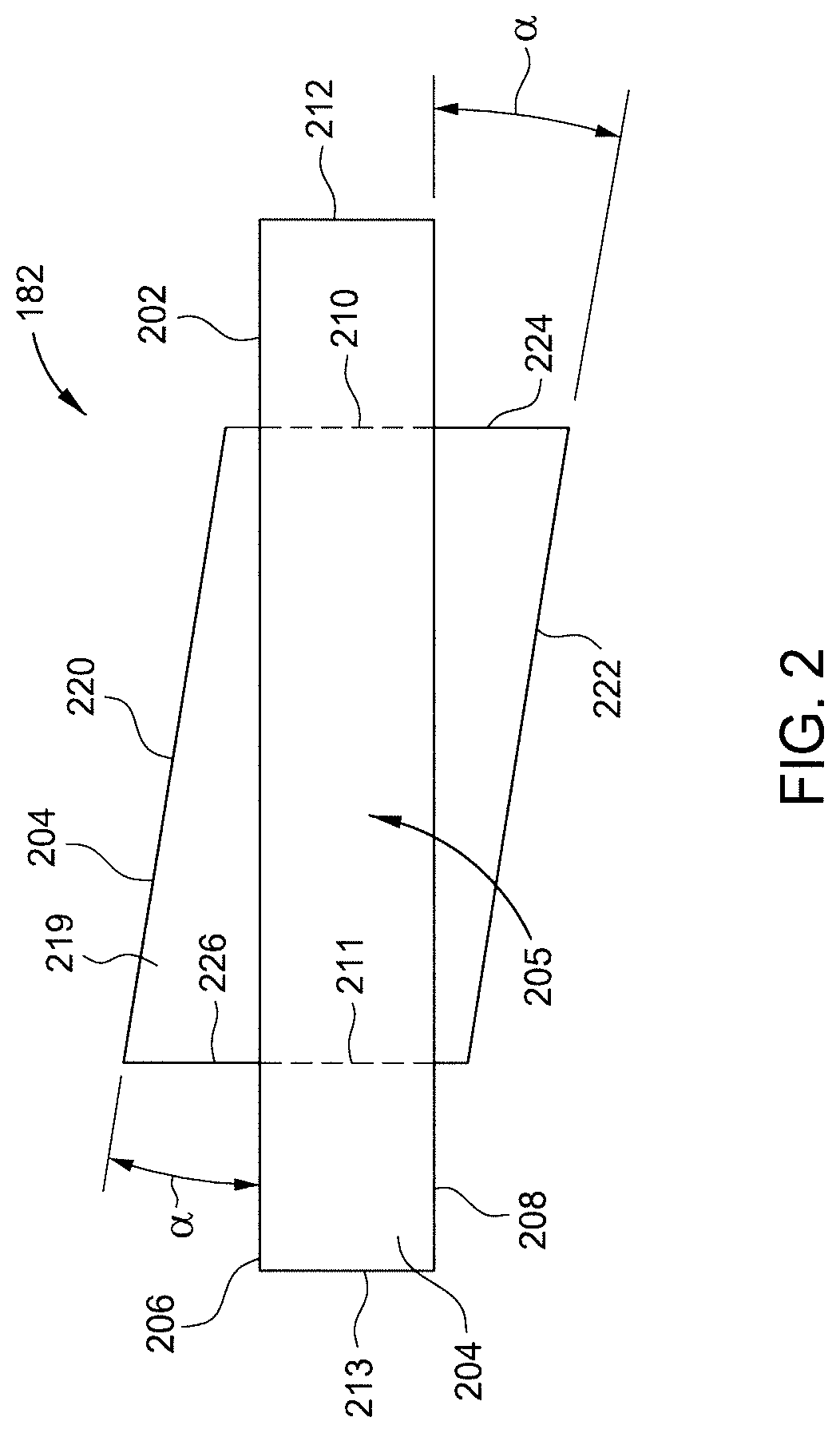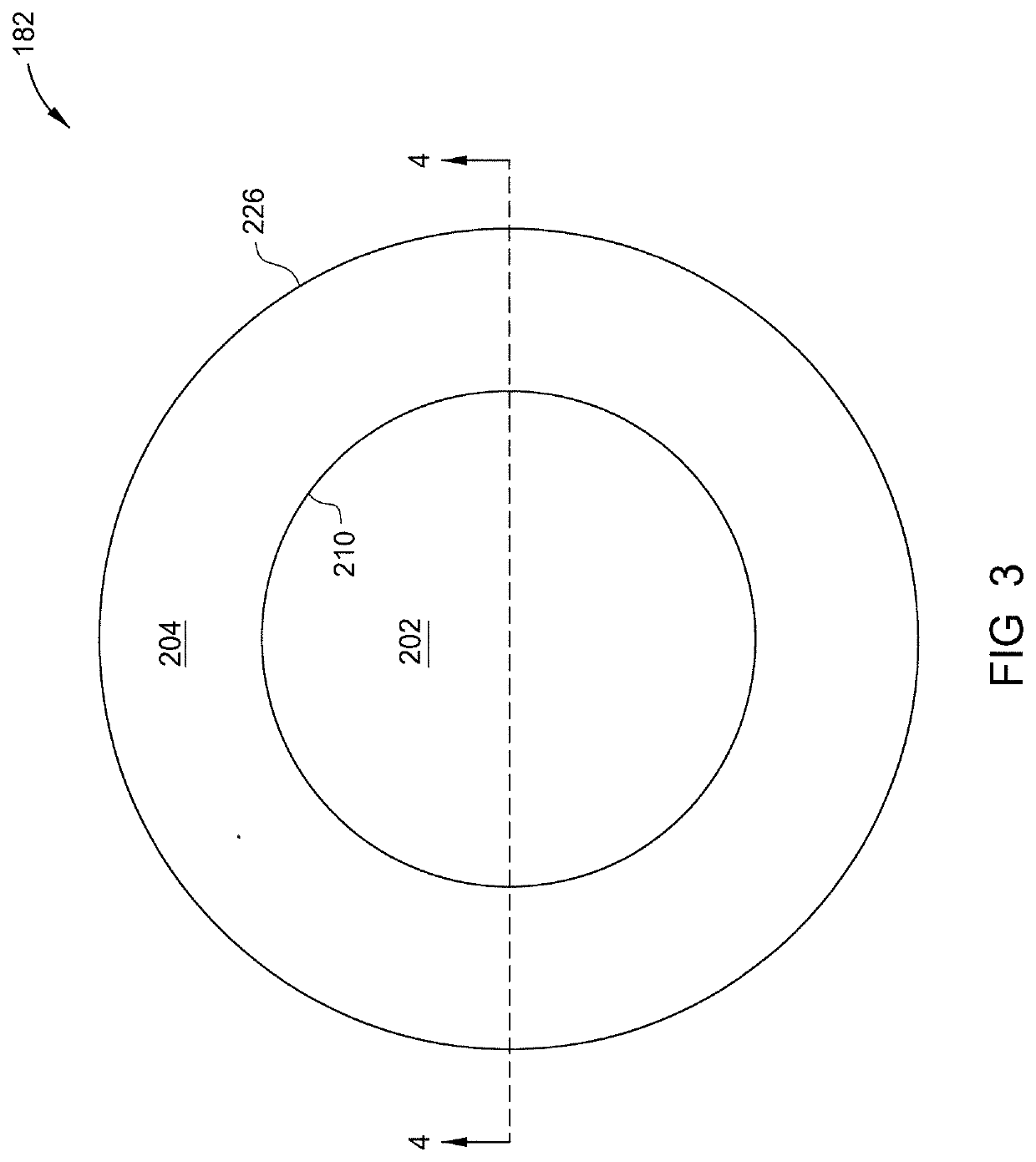Tilted interferometric endpoint (IEP) window for sensitivity improvement
a technology of interferometry and sensitivity improvement, which is applied in the direction of electrical discharge tubes, semiconductor/solid-state device testing/measurement, electrical equipment, etc., can solve the problems of reducing the sensitivity of on-substrat metric etching, iep detection windows that are not oriented to the surface of the substrate, and only working over a limited wavelength rang
- Summary
- Abstract
- Description
- Claims
- Application Information
AI Technical Summary
Benefits of technology
Problems solved by technology
Method used
Image
Examples
Embodiment Construction
[0022]The titled window presented herein can effectively reduce internal reflections over a wide range of wavelengths of interest, such as between about 200 to 800 nm, without the need of anti-reflection coatings. The dynamic range of the IEP system is improved. The direct benefits of the tilted window are improved etch depth control accuracy and extended window life time. The tilted window is generally compatible with existing chamber bodies, and as such, may be retrofit into almost all existing chambers that utilize IEP systems.
[0023]FIG. 1 is a schematic cross sectional view of a plasma processing chamber 100 in accordance with one embodiment of the present disclosure. Suitable processing chambers include inductively coupled plasma etch chambers such as the TETRA® photomask etch system and the AdvantEdge® etch system, both available from Applied Materials, Inc., of Santa Clara, Calif., among others. Other types of processing chambers may be adapted to benefit from the invention, ...
PUM
 Login to View More
Login to View More Abstract
Description
Claims
Application Information
 Login to View More
Login to View More - R&D
- Intellectual Property
- Life Sciences
- Materials
- Tech Scout
- Unparalleled Data Quality
- Higher Quality Content
- 60% Fewer Hallucinations
Browse by: Latest US Patents, China's latest patents, Technical Efficacy Thesaurus, Application Domain, Technology Topic, Popular Technical Reports.
© 2025 PatSnap. All rights reserved.Legal|Privacy policy|Modern Slavery Act Transparency Statement|Sitemap|About US| Contact US: help@patsnap.com



